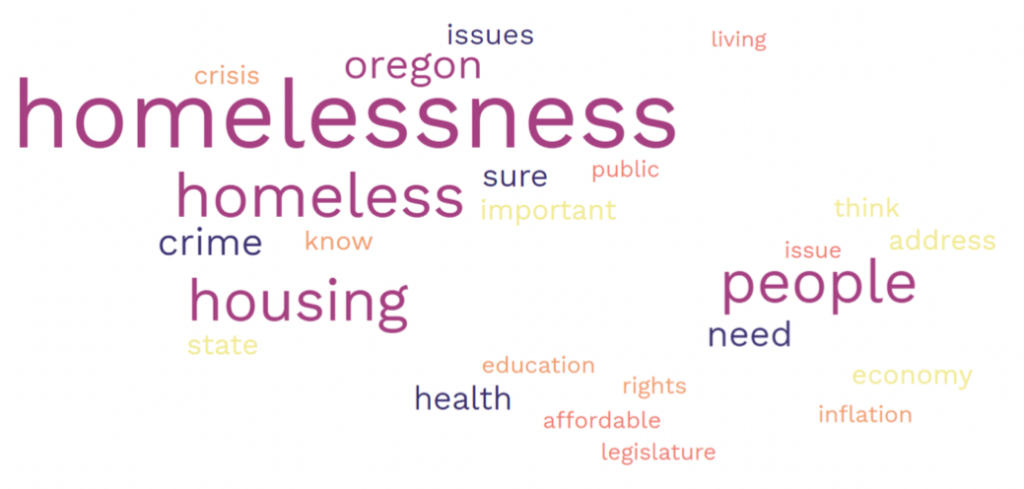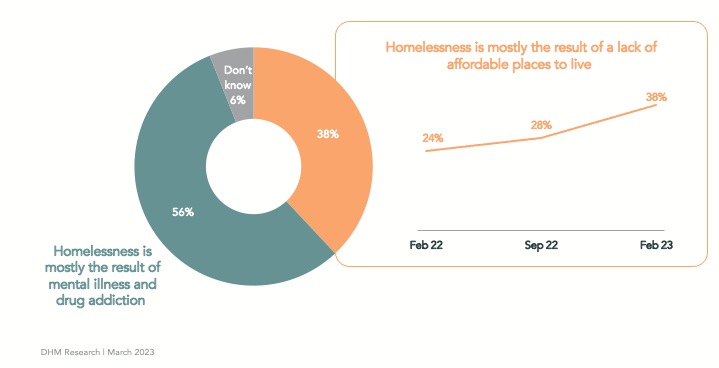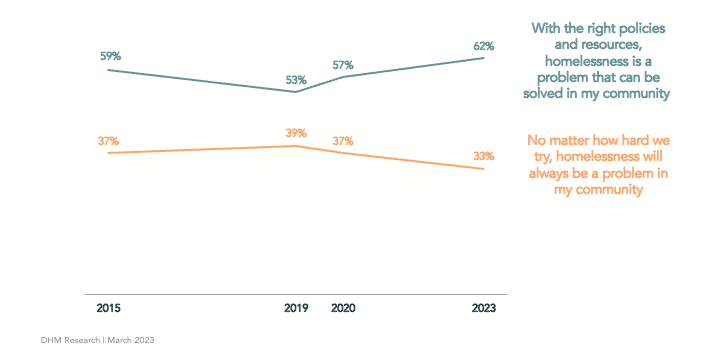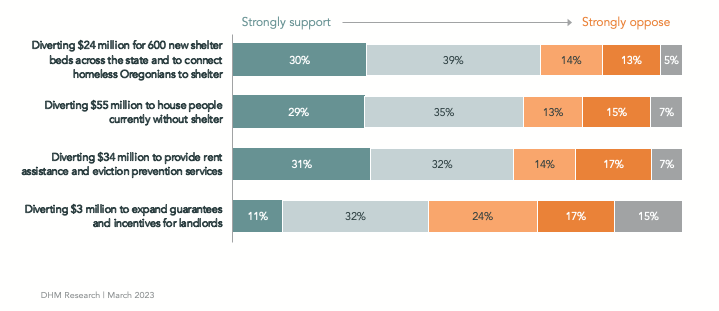Most Oregonians are optimistic that homelessness can be solved in their communities and support diverting money from the state’s “rainy day” fund to do so.
A new DHM statewide poll finds that Oregonians continue to see homelessness and housing as a top priority for the legislature to address in the immediate future. They increasingly see homelessness as the result of a lack of affordable places to live, while remaining optimistic that homelessness can be solved in their communities with the right policies and resources. Here are some key findings from the survey:
Homelessness and housing are identified most often as the issues Oregonians want the legislature to prioritize in the 2023 session.
In your own words, what do think is the most important issue for the Oregon Legislature to address? (Open)

Understanding the cause of an issue can illuminate where people feel funding and resources should be allocated.
A majority of Oregonians (56%) feel homelessness results from mental illness and drug addiction, but the number of those who feel homelessness is mostly the result of a lack of affordable places to live has grown by 14% since last year (Feb 2022: 24%, Feb 2023: 38%). Oregonians ages 18-29, low income (<$50K), and non-homeowners are most likely to identify with the lack of affordable housing view as a catalyst for homelessness among their subgroup counterparts and other key demographic subgroups.

Additionally, almost 2 in 3 Oregonians are optimistic that with the right policies and resources, homelessness is a problem that can be solved in their community.
Confidence in this view dipped in 2019 towards the alternative view—that no matter how hard we try, homelessness will always be a problem in folks’ community—but still did not lose majority support and has continued to climb back up ever since (2019: 53%, 2020: 57%, 2023: 62%). Oregonians in Willamette Valley, Republicans, and those who see homelessness as a result of mental illness and drug addiction are more likely to feel homelessness will always be present in their community compared to their subgroup counterparts, but this opinion does not reach a majority among any subgroup analyzed.

When asked if Oregonians would support diverting money from the state’s “rainy day” fund to pay for projects and services to address housing affordability and homelessness, they most support resources going towards sheltering and housing for homeless folks in the state. Oregonians want to see the money go directly to the homeless individuals themselves, or towards assistance and resources, rather than to incentivize landlords. 69% support diverting $24 million for 600 new shelter beds across the state and to connect homeless Oregonians to shelter, 65% support diverting $55 million to house people currently without shelter, and 62% support diverting $34 million to provide rent assistance and eviction prevention services, while only 44% support diverting $3 million to expand guarantees and incentives for landlords.

The strongest support for the top three initiatives comes from Oregonians who are younger (ages 18-29 or 30-44), Democrats or NAV/Other, the lowest and highest ends of the income ranges (<$50K and $150K+), non-homeowners, and those who see homelessness as a result of lack of affordable housing.The most supported initiative—to divert $24 million for 600 new shelter beds across the state and to connect homeless Oregonians to shelter—has over 50% support among every subgroup analyzed. The next two most supported initiatives (diverting $55 million to house people currently without shelter and diverting $34 million to provide rent assistance and eviction prevention services) have over 50% support among most subgroups except Republicans, ages 65+, and those who see homelessness as a result of mental illness and drug addiction.
